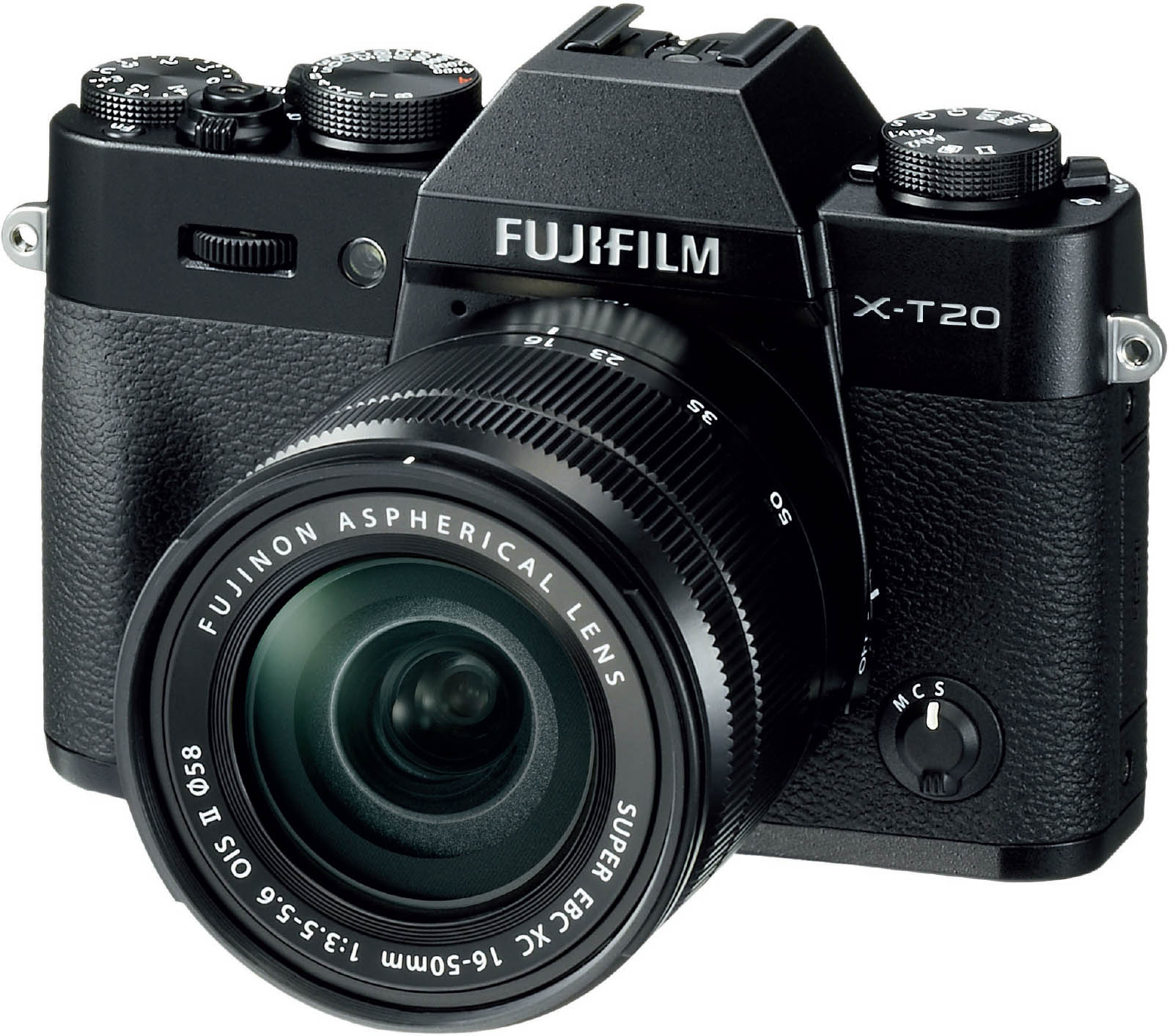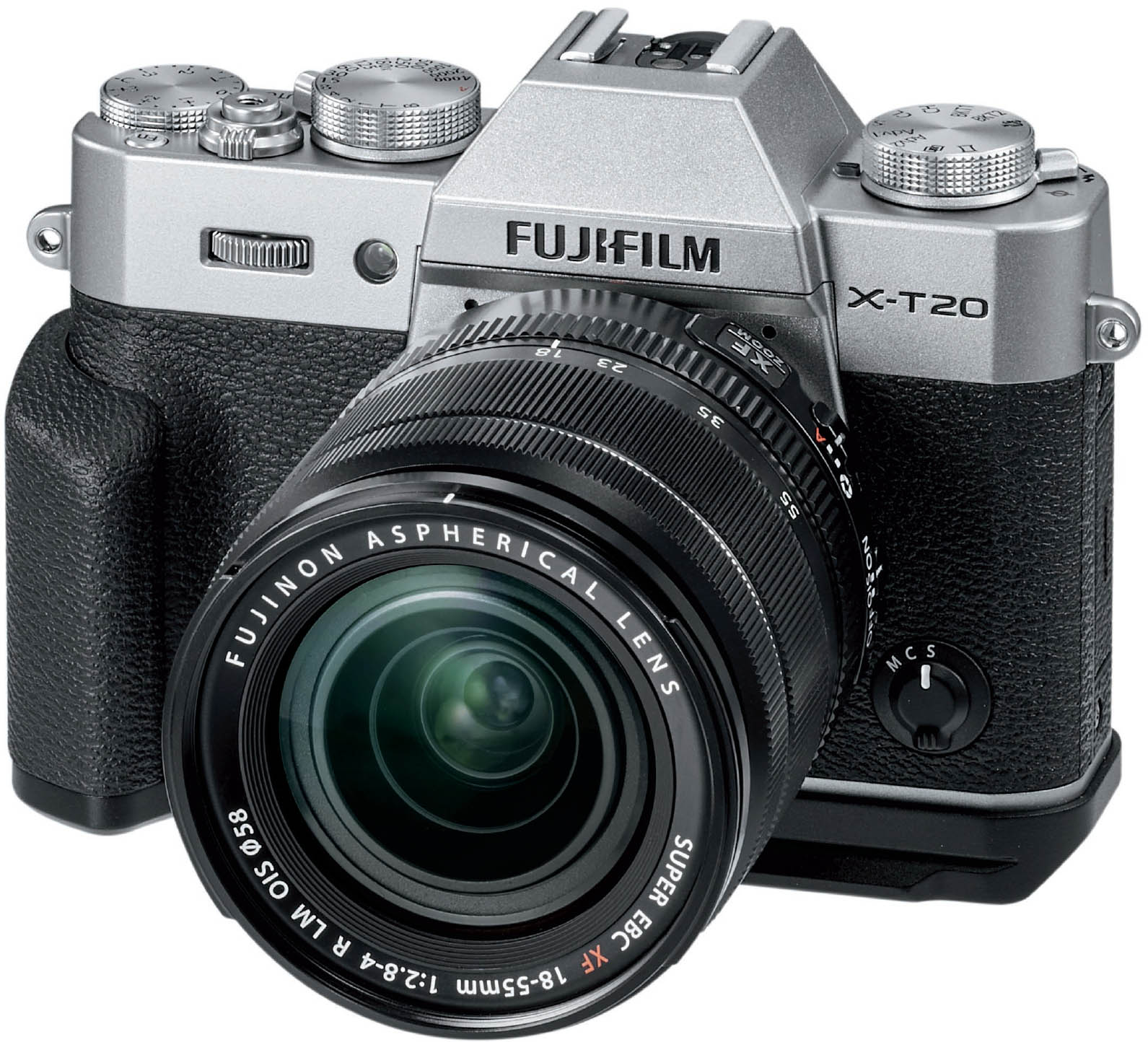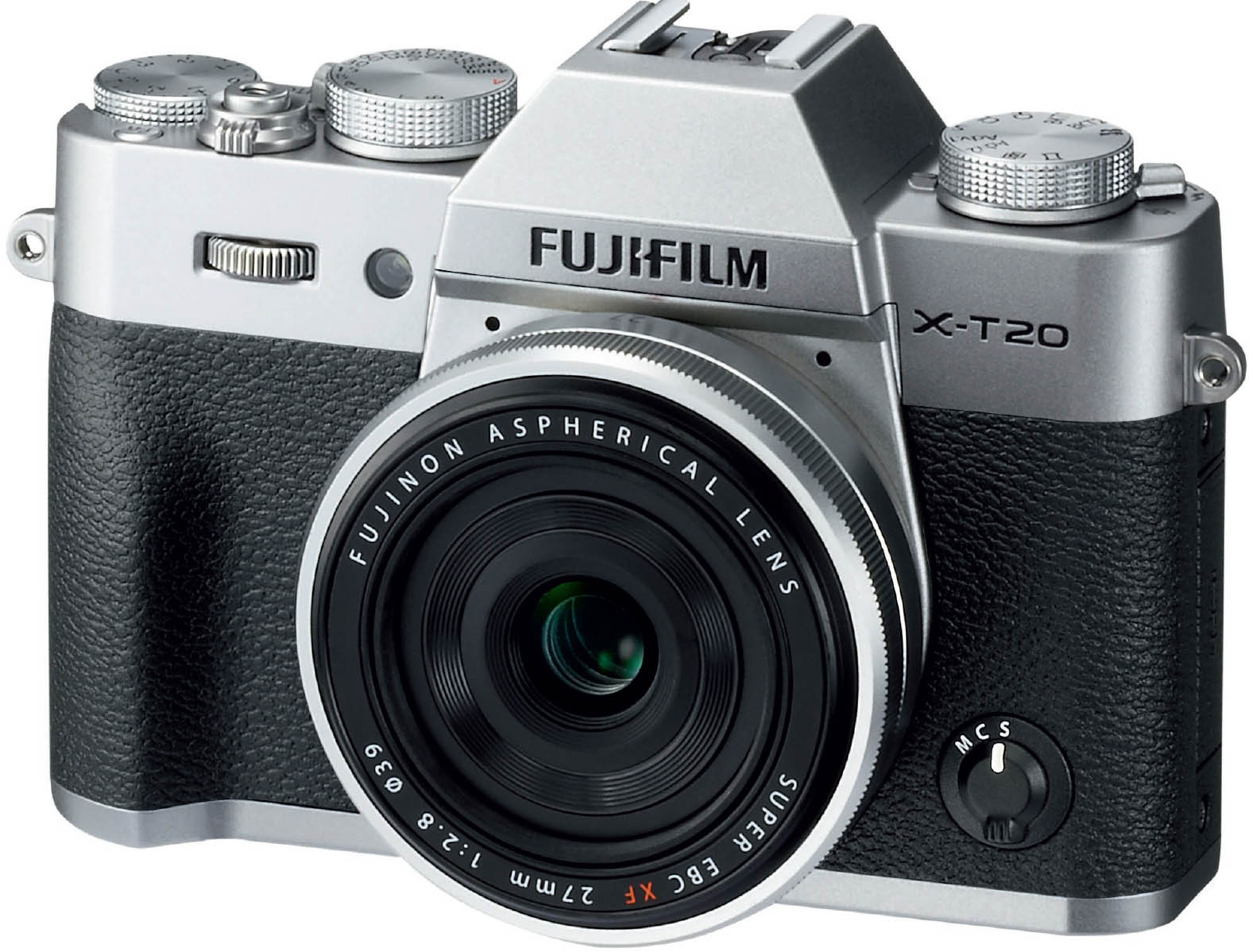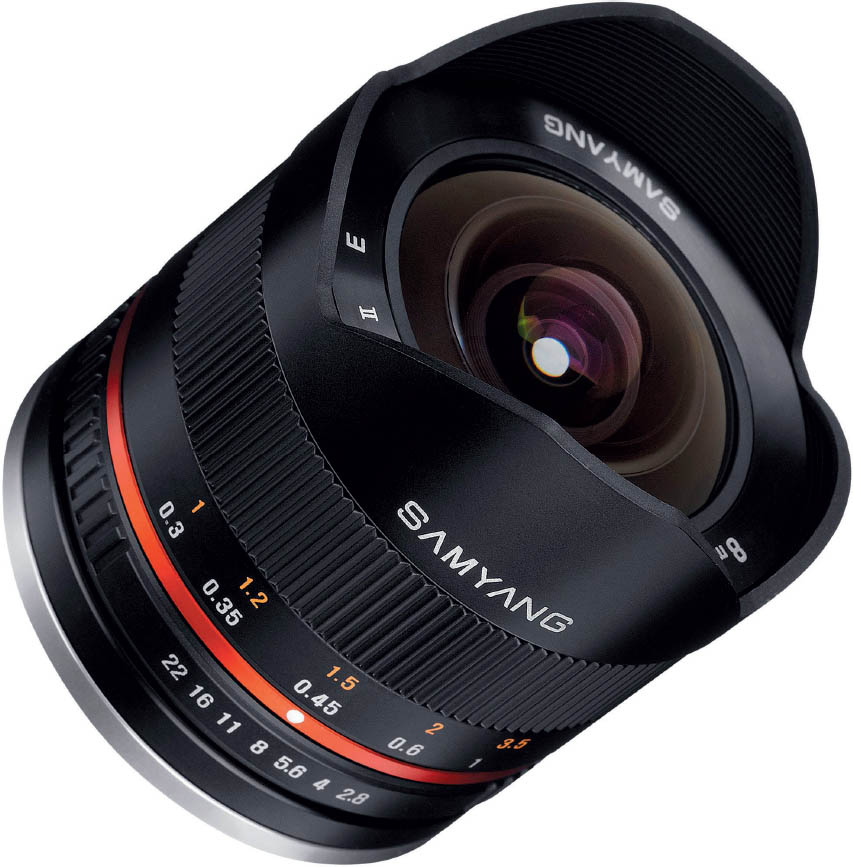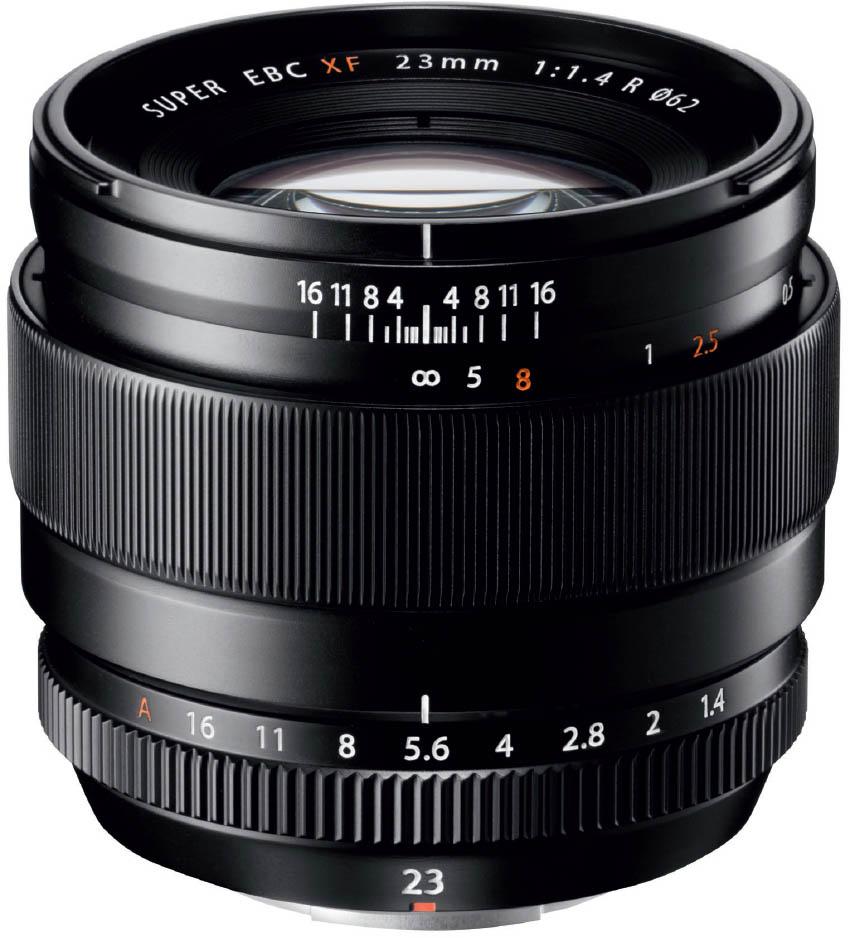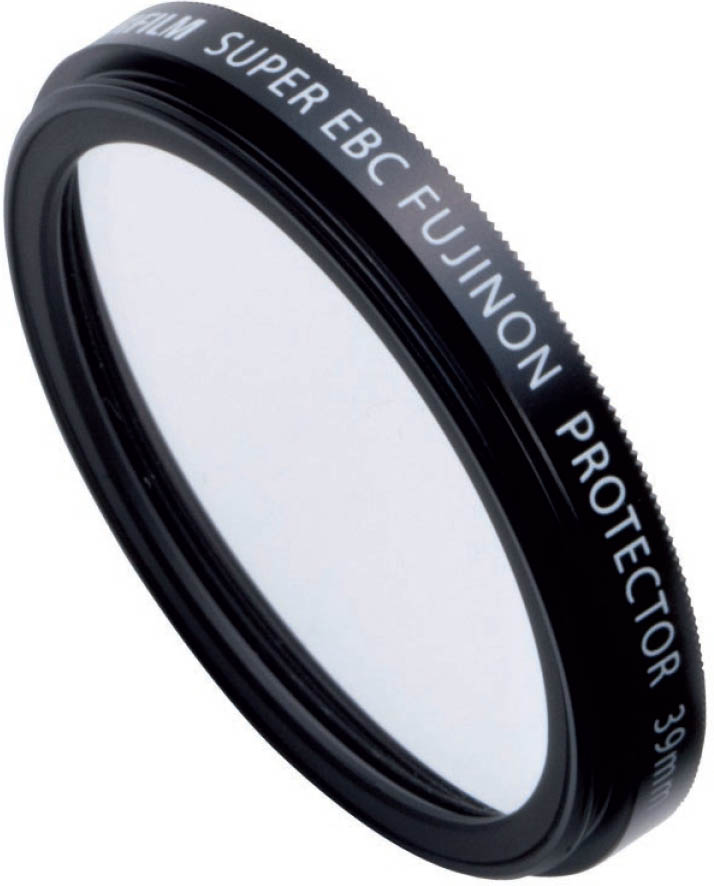1.2 THE BASICS (2): THINGS YOU SHOULD KNOW ABOUT YOUR LENSES
Your camera is compatible with the following native X-mount lenses:
- Fujinon XF lenses (prime and zoom lenses)
- Fujinon XC lenses (compact, more affordable lenses)
- Zeiss Touit X-mount lenses (prime lenses)
Confused about which lens category does what? Here’s the low-down as of May 2017:
- Fujinon zoom lenses (except for the XF16–55mmF2.8 lens) feature an optical image stabilizer (OIS).
- Fujinon XF lenses (except for the XF27mmF2.8 pancake lens) and Zeiss Touit lenses feature an aperture ring.
- Fujinon XC lenses don’t feature an aperture ring. With these lenses, the aperture is set using the camera’s command dial.
- Fujinon XF and XC lenses (except for the XF56mm APD prime lens) and the three Zeiss Touit lenses support fast phase detection autofocus (PDAF) with the camera’s central AF frames. However, lacking adequate firmware updates, the autofocus performance of the Touits cannot keep up with Fujifilm’s own lenses.
- Fujinon XF lenses offer LMO (lens modulation optimizer) support. The LMO mitigates undesirable optical effects such as diffraction, which occurs when a lens is stopped-down to a small aperture.
- Zeiss Touit lenses and Fujinon XC lenses do not support the LMO.
- As of May 2017, there are seven lenses that support a particularly fast version of the X-T20’s contrast detection autofocus (CDAF): XF16–55mmF2.8 R LM WR, XF50–140mmF2.8 R LM OIS WR, XF90mmF2 R LM WR, XF35mmF2 R WR, XF100–400mmF4.5–5.6 R LM OIS WR, XF23mmF2 R WR, and the XF50mmF2 R WR.
In addition to native X-mount lenses, you can also attach a host of current and older lenses from other manufacturers to the X-T20 with the use of a suitable adapter. Remember that adapted lenses will always operate at the set working aperture. Autofocus, program AE, and shutter priority AE will not be available, either.
XC or XF? Zoom or prime? |
System cameras are mostly sold in discounted “kits” that consist of a camera body that’s paired with a so-called “kit lens,” which is typically a standard zoom lens with second-rate image quality.
Fujifilm is doing things a little bit differently here with the affordable and flexible XC16–50mmF3.5–5.6 OIS II kit zoom, which delivers great results. This is the second generation of the XC16–50mmF3.5–5.6 OIS kit zoom that was introduced in concert with the X-M1. The most notable improvement of the Mark II edition is its reduced minimum focus distance (MFD). This means that you can now get closer to your subject, basically adding macro capability without using an extension tube.
Fig. 11: Thanks to its relatively low price, the rather compact and lightweight XC16–50mmF3.5–5.6 OIS II is a popular kit zoom lens for the X-T20.
The XC16–50mmF3.5–5.6 OIS II features an exterior and bayonet made of less expensive plastic. To save costs, there’s no aperture ring and no switch for the optical image stabilizer (OIS). With a maximum aperture of F3.5–5.6, it’s also not the fastest lens on the planet, but make no mistake: it’s built from top-notch optical glass, and the results can easily keep up with more expensive lenses.
If you are looking for a faster alternative to the affordable XC16–50mmF3.5–5.6 OIS II, the XF18–55mm F2.8–4.0 R LM OIS may be your weapon of choice. This larger, heavier kit zoom features an aperture ring and switches for OIS and aperture mode. Its build quality is very good.
To better fit this combo into your hand, you might want to consider adding an optional MHG-XT10 hand grip to the camera. Give it a try!
Fig. 12: The XF18–55mmF2.8–4.0 R LM OIS is larger, heavier and more expensive than the XC16–50mmF3.5–5.6 OIS II. It’s also faster and features an aperture ring and switches for OIS and aperture mode. This illustration shows the lens on an X-T20 in concert with an optional MHG-XT10 hand grip.
Since the X-T20 is a very compact system camera, it’s a good idea to also consider a small prime lens as your standard walk-around gear. A particularly fitting choice is the small and flexible XF27mmF2.8 pancake lens. With it, the camera fits in the pocket of almost every coat or jacket. Optically, this little lens is pretty big. At 27mm (that’s a full-frame equivalent of 41mm), it’s very flexible and can be used for street photography, landscape (including panoramas), or even portraits with nice subject-background separation.
My recommendation: Have a closer look at the X-T20 with an XF27mm pancake lens.
Fig. 13: Small—but, oh my! In concert with the long-underestimated XF27mmF2.8 pancake lens, the X-T20 fits in (most) coat pockets.
X-mount compatible Samyang lenses are just like adapted lenses! |
Manual focus lenses from Samyang (Rokinon) and similar brands aren’t native X-mount lenses. They simply come with a compatible mechanical mount so you don’t have to buy an additional adapter. These lenses behave like other adapted third-party lenses: they don’t communicate with the camera (there’s no data transmission because there aren’t any electronic contacts), there’s no autofocus, the live view [07] operates with the currently set working aperture, and you can only use modes A and M.
Fig. 14: The affordable Samyang 8mmF2.8 Fisheye II manual focus lens for Fujifilm X-mount is a popular choice to record images with extreme angles.
Zeiss Touit lenses |
Even though Touit lenses with native X-mount compatibility offer great image quality and work like Fujinon XF lenses, Zeiss tends to be hesitant to support new camera features with lens firmware updates. It took Zeiss about half a year longer than Fuji to offer PDAF support, and there is still no LMO support. There’s also no indication that Zeiss wants to continue with the Touit line of lenses.
Fig. 15: The wide field-of-view of the Zeiss Touit 2.8/12mm lens makes it ideal for landscape or interior shots.
Decoding XF18–135mmF3.5–5.6 R LM OIS WR |
This tip is of the “what you always wanted to know but never dared to ask” variety:
- XF: “X” means X-mount or X-series; “F” means Fine, for Fuji’s premium line of lenses. There’s also the smaller, more affordable XC line (“C” stands for Compact or Casual).
- 18–135mm: This is the focal length range of the zoom lens. To translate the numbers to their full-frame equivalents, you must multiply them by the APS-C crop factor [08] of 1.5. Hence, the field-of-view (FOV) of an 18–135mm zoom on your X-T20 is identical to the FOV of a 27–202mm zoom lens on a full-frame camera.
- F3.5–5.6: This range describes the maximum aperture opening at the low and high end of the focal-length range. In this case, the lens offers a maximum aperture of f/3.5 at 18mm and f/5.6 at 135mm.
- R: This stands for Ring and simply means that the lens features an aperture ring. This is a standard feature of all Fujinon XF lenses, except for the XF27mmF2.8 pancake lens. XC zooms don’t offer an aperture ring, either. With those lenses, the aperture setting is controlled with the command dial when you are using exposure modes A or M.
- LM: This stands for Linear Motor, which ensures quick and silent autofocus operation.
- OIS: This is the Optical Image Stabilizer [09]. This feature allows you to perform handheld shots at up to five stops slower of a shutter speed than you would usually need to eliminate camera shake. For example, in situations that would normally require a shutter speed of 1/80s to ensure a clear image, you could shoot with 1/4s and still get usable results. It’s important to remember that motion blur often plays a role at slower shutter speeds since many subjects tend to move. Obviously the OIS cannot reduce motion blur [10]—only blurring that occurs due to camera shake (i.e., the shaky hands of the photographer).
- WR denotes weather resistant lenses. Please note that unlike the X-T2 or X-Pro2, your X-T20 body is not rated WR.
Fig. 16: The affordable XF50mmF2 R WR is Fujifilm’s latest compact prime lens for the X-series. It’s weather resistant, and its lean design doesn’t obscure the optical viewfinder of the X-Pro1 and X-Pro2. Due to its compact size, terrific performance, and great image quality, it’s also one of my favorite lenses for the X-T20. You can get it in two colors to match your version of the X-T20.
The optical image stabilizer (OIS) has its quirks! |
Apart from the XF16–55mmF2.8 R LM WR zoom, all XF and XC zoom lenses feature built-in optical image stabilization (OIS). Switch on the OIS to prevent camera shake and blurry images in situations that require you to take handheld shots at a slower-than-usual shutter speed. XF lenses offer a dedicated OIS on/off switch on the lens barrel. The OIS in XC lenses is controlled through the camera menu.
For handheld shots, an old rule of thumb recommends using shutter speeds that are at least as fast as the reciprocal of the full-frame-equivalent focal length that is in use. For example, with a 50mm lens and an APS-C crop factor of 1.5, the minimum safe shutter speed for handheld camera use would be [1 / (50 × 1.5)] s = 1/75s. In other words, when you are shooting handheld with a 50mm lens and don’t want shaky images, you should use shutter speeds at least as fast as 1/75s. Or you can use the OIS to add a few more stops.
Of course, rules of thumb don’t apply to everybody. Some users have quite steady hands, while others have a shaky grip. The settings and equipment that work for me may not work for you. However, the OIS will always give you a few extra stops of shutter-speed headroom.
In SHOOTING SETTING > IS MODE, you can choose between two basic OIS modes:
- OIS mode 1 (CONTINUOUS) is the default setting. It’s always stabilizing the image, even when you are just looking through the viewfinder before you press the shutter button.
- OIS mode 2 (SHOOTING ONLY) engages only when you fully depress the shutter button to take an image (or halfpress it in AF-C mode).
Please note that the OIS can also introduce camera shake, especially at fast shutter speeds. This adverse effect is more likely to occur in OIS mode 1 than in mode 2. However, OIS mode 1 is more effective when used at very slow shutter speeds, such as 1/15s, 1/8s, or even 1/4s.
Fig. 17: The optical image stabilizer of the XF50–140mm in action: Thanks to a slow shutter speed of 1/6s, I could still use ISO 800 for this night shot. Even at a full-frame equivalent of 210mm, the OIS could successfully compensate for any camera shake caused by my hands.
These are my recommendations for using the OIS:
- Only use (switch on) the OIS when necessary. When you are using fast shutter speeds that don’t require image stabilization, you can safely turn the OIS off to eliminate it as a potential interference.
- I prefer to use the OIS in mode 2 (“shooting only”). Mode 1 is useful at very slow shutter speeds and when you are using long focal lengths because the camera will also stabilize the live view image, making it easier to compose and focus a shot.
- Turn off the OIS when you are working from a sturdy tripod or with shutter speeds that are slower than a second. You should also switch it off for panning [11] shots.
By the way, the OIS emits a soft humming sound, even when the function is turned off. Don’t worry about the noise.
OIS and motion detection: what’s going on? |
When Auto-ISO is active and you are shooting in either aperture priority A or program AE P, the X-T20 offers another OIS option: motion detection. When the camera detects subject movement at the time of shooting, this feature increases the shutter speed by one or two stops to reduce unwanted motion blur. To compensate for the reduced exposure time, the camera will increase the ISO value of the shot accordingly.
Motion detection reacts on either subject movement or camera movement, both of which can’t be compensated by the OIS. This makes it possible to select a slower minimum shutter speed (SHOOTING SETTING > ISO > AUTO (1–3) > MIN. SHUTTER SPEED) in the Auto-ISO settings (which would be suitable for static subjects). However, when the motion detection registers subject or camera movement while the shutter is half or fully depressed, it will temporarily increase the minimum shutter speed by one or two stops. It’s a smart way of adapting to a quickly changing scene.
Motion detection can be combined with both OIS modes (1 and 2). You can find the option in the OIS menu (SHOOTING SETTING > IS MODE) as CONTINUOUS+MOTION (OIS mode 1 with motion detection) and SHOOTING+MOTION (OIS mode 2 with motion detection).
Don’t forget that these two additional OIS options are only available when Auto-ISO is active and the camera is set to either aperture priority or program AE. To grant motion detection sufficient operating room, the Auto-ISO ceiling (MAX. SENSITIVITY) should be set to a reasonably high value, such as 12800.
The XF23mmF1.4 R, XF16mmF1.4 R WR, and XF14mmF2.8 R are different beasts! |
Unlike standard X-mount lenses, the wide-angle primes XF14mmF2.8 R, XF16mmF1.4 R WR, and XF23mmF1.4 R feature a more traditional manual focus ring with a clutch mechanism:
- Pull the focus ring towards the camera to set the lens to manual focus.
- Push the focus ring away from the camera to set the lens to autofocus.
- Alternatively, you can use the traditional focus selector switch at the front of the camera to set the X-T20 to manual focus mode. In this case, the lens remains in autofocus mode, and you can only use the AF-L button (Instant AF) to change the focus. This also means that you cannot manually adjust your focus after focusing with Instant AF.
- You cannot use Instant AF (AF-L button) to focus when the focus ring of the lens is set to manual focus. In this case, you can only use the manual focus ring to change or adjust the focus.
- The analog depth-of-field (DOF) markers on the lens barrel correspond with the X-T20’s electronic film format-based scale and are less conservative (and in my opinion less useful) than the camera’s pixel-based scale. This is because the pixel-based scale is using a much smaller circle of confusion [12] to display DOF ranges with pixel-sharp results at 100% magnification, whereas the engraved scale on the lens uses a value that’s based on looking at typically sized prints from a typical distance with typical eyesight. Some photographers regard the engraved scale (which equals the electronic film format-based scale) as more practical. Personally, I prefer the pixel-based scale. In any case, the actual difference between the two scales is about 3.5 aperture stops. To switch between the film format-based and the pixel-based electronic DOF displays, select AF/MF SETTING > DEPTH-OF-FIELD SCALE and then select either PIXEL BASIS or FILM FORMAT BASIS.
- It’s not possible to reverse the focusing direction of the manual focus ring with the 14mm, 16mm, or 23mm lenses.
- If you set your X-T20 to AF+MF mode (AF/MF SETTING > AF+MF > ON), you can only use this feature when the lens clutch is set to MF and the camera to AF-S. In this configuration, you can autofocus by half-pressing the shutter button, and then manually adjusting the focus with the focus ring (while keeping the shutter button half-pressed).
Fig. 18: Fujinon XF23mmF1.4 R with engraved distance and DOF markers. It’s a nice retro touch, but you lose some state-of-the-art digital functionality.
Use the Lens Modulation Optimizer (LMO)! |
The X-T20 supports the Lens Modulation Optimizer or LMO. This feature premiered in the X100S and X20 fixed-lens cameras, and it counteracts common optical phenomena (like diffraction [13] and corner softness) when the camera converts the RAW data into JPEG images. To make it work, the firmware in the attached lens sends the LMO correction data to the camera.
- Neither Fujinon XC lenses nor Zeiss Touit lenses support the LMO.
- LMO data is proprietary and not available to external RAW converters.
If your lens supports the LMO (all Fujinon XF lenses do), you should enable the function by selecting LENS MODULATION OPTIMIZER > ON in the IMAGE QUALITY SETTING menu.
You can also use the built-in RAW converter of your X-T20 (PLAYBACK MENU > RAW CONVERSION) to enable or disable the LMO for a specific image. With this method, it’s easy to create and compare versions of a shot with and without LMO enhancements.
The LMO takes care of the following optical effects:
- Diffraction softness: This effect increasingly occurs when the lens is stopped down beyond a certain point. APS-C cameras like the X-T20 typically exhibit diffraction at apertures of 10 and smaller. While stopping down increases the overall depth of field (DOF), it also reduces the maximum resolution of the lens/camera combination. The LMO counteracts this effect and reconstructs some of the lost detail.
- Corner softness: Even the best lenses aren’t as sharp in the corners as they are in the center. The LMO in the X-T20 can digitally compensate for that loss of quality.
LMO corrections are based on complex deconvolution [14] algorithms. Currently, this is only supported in-camera with the built-in RAW converter. External converters such as Lightroom, Adobe Camera Raw, Capture One Pro, Silkypix, Iridient Developer, Photo Ninja, or AccuRaw can’t process LMO data. This means that LMO corrections are only visible in JPEGs that have been generated in the camera.
Things you should know about digital lens corrections: |
Most modern lenses achieve their optimal image quality through a combination of optical and digital corrections. Corrections are mostly applied to the three following phenomena:
- Vignetting: This effect results in a loss of brightness from center to corner. Vignetting [15] is more pronounced at large (open) apertures.
- Distortion: There are pincushion- and barrel-type distortions [16], both of which make straight lines seem curved. Premium primes like the XF14mm, XF23mm (F1.4 and F2), XF35mmF1.4, XF56mm, and XF90mm are fully optically corrected for distortion. Others (such as the Zeiss Touit range, compact pancake lenses, the XF35mmF2 and XF50mmF2, or zoom lenses) require a combination of optical and digital distortion correction.
- Chromatic aberration: Chromatic aberration [17] results in color fringing. This effect can be corrected (or mitigated) with apochromatic lenses, or digitally corrected during RAW conversion.
Some camera makers rely on dedicated correction profiles that must be provided by each RAW converter maker. Fujifilm isn’t one of these companies: all current Fujifilm cameras store digital corrections as metadata in the RAW file. RAW converters can access this lens-specific metadata and use it to apply appropriate corrections. This way, the built-in RAW converter and external RAW conversion software, such as Lightroom, Silkypix, Iridient Developer, or Capture One, can use the metadata in the RAW file to correct or mitigate vignetting, distortion, and chromatic aberration.
A major benefit of this method is that many RAW converters automatically support new lenses since Fujifilm delivers the correction data via the RAW metadata. However, there’s also a drawback: some RAW converters (such as Lightroom, Adobe Camera Raw, and Silkypix) don’t give you the option to switch off metadata-based digital lens corrections, even if you’re convinced they aren’t necessary. Since digital distortion correction always results in some loss of image sharpness and detail due to the required stretching and interpolation of pixels, this can be a headache for some users. Obviously, not all subjects or images require the same amount of digital correction (it can also be a simple matter of taste), so full user control over the application of digital lens corrections is a very nice feature.
Luckily, software like Iridient Developer and Capture One offer control over how much digital metadata distortion (or vignetting) correction should be applied. Other programs (like Photo Ninja and AccuRaw) simply ignore lens correction metadata. With such programs, all corrections must be applied either manually or by using a dedicated profile.
Use the included lens hood! |
With the single exception of the XF27mmF2.8 pancake lens, all Fujifilm XF and XC lenses come with a fitted lens hood, which should be used whenever possible. Apart from its optical benefits, the hood protects the lens and the front glass element from damage.
Lens hoods can pose problems, too: they make the lens appear bigger than it is, and they can shade the camera flash or the autofocus assist light. They also use up extra space in your bag, although most hoods can be reverse-mounted on the lens for transport purposes.
When you shoot with a small shoe-mounted flash, or when you depend on using the AF assist lamp, it’s best to remove the lens hood.
Lens protection filters—yes or no? |
Digital cameras like the X-T20 don’t require the UV or skylight filters that used to be very popular in the days of analog film photography. This means that a permanently affixed filter has no optical purpose, and only serves as protective glass. This additional glass can have a negative effect on image quality, especially at night or when you shoot against a bright light source. Filters increase the chance of ghosting, unwanted reflections, or a loss of contrast.
I recommend using protective glass only in situations that require this additional protective layer. In most situations, the lens hood should provide sufficient protection. If you still decide to use a filter, make sure to choose a high-quality product. Fujifilm offers suitable protective filters that feature the same Super EBC coating used on their XF/XC lenses. Be prepared to pay a premium, though.
39mm filters can be tricky! |
The XF60mmF2.4 R and XF27mmF2.8 lenses require filters with a 39mm thread. It’s important that those filters are designed to allow the inner lens barrel to freely retract into the outer barrel while the filter is attached. If this isn’t possible (for example, because a thin step-up ring is directly attached to the lens or because the filter’s overall diameter is too large), the lens can be damaged when the filter or step-up ring collides with the outer barrel of the lens.
A typical indicator for this and other mechanical lens problems is a message alerting you that the camera needs to be switched off and on again. A possible solution is putting a spacer (a suitable 39mm filter, for example) between the lens and the step-up ring. You should remove the glass from the spacer, so any cheap/old/unused 39mm filter will do the job if it fits and doesn’t interfere with the outer lens barrel when the inner barrel is retracting.
Fig. 19: A 39mm protection filter by Fujifilm. A filter like this can also be used as a spacer between the lens (XF60mm or XF27mm) and a step-up ring.

